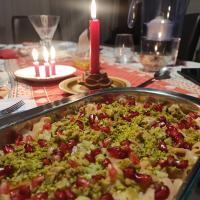Copy Link
Add to Bookmark
Report
Cider Digest #1712

Subject: Cider Digest #1712, 17 May 2012
From: cider-request@talisman.com
Cider Digest #1712 17 May 2012
Cider and Perry Discussion Forum
Contents:
Kingston Black ("Rich Anderson")
Kingston Black a shy bearer (Jack O Feil)
NOTE: Digest appears whenever there is enough material to send one.
Send ONLY articles for the digest to cider@talisman.com.
Use cider-request@talisman.com for subscribe/unsubscribe/admin requests.
Archives of the Digest are available at www.talisman.com/cider#Archives
Digest Janitor: Dick Dunn
----------------------------------------------------------------------
Subject: Kingston Black
From: "Rich Anderson" <rhanderson@centurytel.net>
Date: Sat, 12 May 2012 13:29:52 -0700
For whatever reason I have maybe 150 Kingston Blacks on M9 planted over a 4
year period. As others have noted they are a cranky tree to work with. Mine
go biennial, but not entirely so I will have an off-year with maybe 2-3 bins
and an on-year with 5-6 bins. They are prone to canker but seem to survive
it better than other varieties. I still like the apple since it has the
acidity I lack when the Brown's go biennial.
------------------------------
Subject: Kingston Black a shy bearer
From: Jack O Feil <feilorchards@juno.com>
Date: Sun, 13 May 2012 08:35:17 -0700
More on Kingston Black's shy bearing. I read that this variety is
self sterile and therefore needs a pollinizing partner close by , one
that blooms at the same time. My Kingston Black is a late bloomer, blooms
when my other apples are past providing viable pollin. One way to
overcome this problem is to buy pollin, available through pollinizing
companies or collect your own pollin from early bloomers or collect the
year before, freeze it, put it in an air tight container with a with a
descant (not in contact with the pollin), I was told by experts that it
will stay viable for several years. Collecting pollin is an easy process
and may be on the Internet course pollinizing insects must be present, if
for just a tree or two, do it by hand. An easier way is to graft a
pollinizing partner on the tree or plant a partner close by. Their are
some late cider varieties and also late blooming crabs. Crabs are used
extensively in commercial orchards in our area for pollinization and some
are late bloomers. Cider made from Kingston Black is special so it is
probably worth the effort to get good cropping.
The rootstock is also important, look through tree fruit nursery
catalogs for that kind of information.
Early thinning is also a way to help with alternate bearing
varieties, commercially , we use thinning chemicals, lacking the
availability or those products, hand thinning is an option, but to be
effective it needs to be done as soon as fruitlets appear(eight to ten
millimeters diameter), In our commercial orchards, late thinning is not
effective for return bloom but some varieties are biennial and nothing
seems to work. Jack
------------------------------
End of Cider Digest #1712
*************************





















